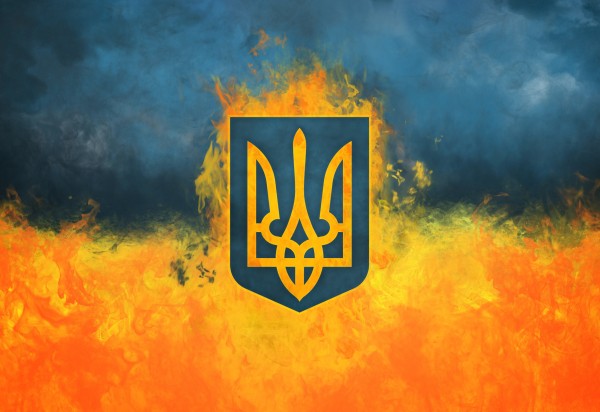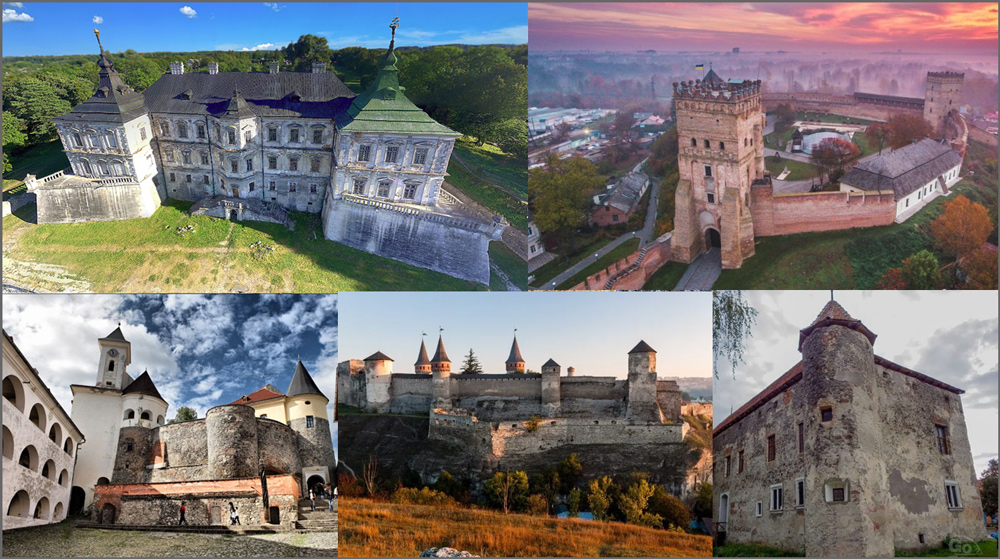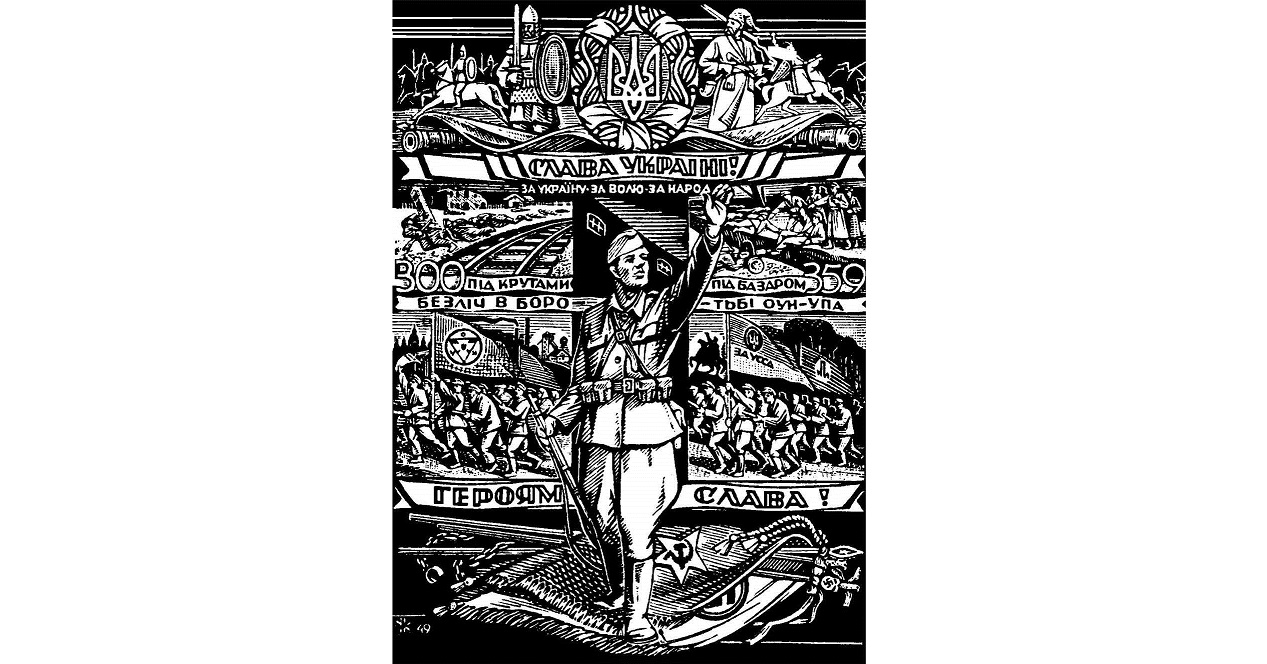The most important question of why and how the inclusion of trident to this guide became possible remains speculative. Yet, to include a symbol of a sovereign state to such a list requires very thorough political argumentation. While an official response to the letter of the Ukrainian embassy in the UK gives little clarification so far, such a mixture of absolutely different signs & symbols in the official guide reveals ignorance or negligence in the work of the agency.
Here is a short history and explanation of the interpretations of the Ukrainian trident as well as the reaction of all sides on the occasion.
How was the trident included in the poster?
The Ukrainian trident (tryzub), historically also referred to as trinity (triytsia) is the national symbol and official coat of arms of Ukrainian state. However, in the poster of British Counter Terrorism Policing, the trident is placed among the typical neo-nazi or III Reich symbols, implying that it has a similar meaning. Under the photo of a tattoo with Ukrainian trident, the caption says “Ukrainian trident (Nationalist)”. Due to ambiguous meaning of the word “nationalism” in contemporary society, as well as due to the context of other dubious symbols in the report, the trident is interpreted as an extremist symbol while nothing is said about the fact that it is the official coat of arms of Ukraine.

was used as an annex for the longer 24-page guide that was disseminated among school teachers, medical staff as well as University lecturers as part of the campaign for the prevention of terrorism and radicalization.
The Ukrainian Foreign Affairs Ministry and, in particular, Ukraine’s Embassy to the UK, consider this case “beyond outrageous.” “No explanations acceptable. We demand Trident to be removed from Guide with official apologies,” says the twitter of Ukraine’s Embassy to the UK.
Placing the Trident #Tryzub, constitutional national symbol&Coat of Arms of #Ukraine, in Extremism Guide produced by @TerrorismPolice for UK teachers&medical staff is beyond outrageous. No explanations acceptable. We demand Trident to be removed from Guide with official apologies pic.twitter.com/sYbjW9yrsb
— Embassy of Ukraine to the UK (@UkrEmbLondon) January 19, 2020
Ukraine’s Ministry of Foreign affairs has also submitted its statement to the UK and commented:
The State Emblem of Ukraine originated at the times of the Kyivan Rus and represents one of the symbols of unity of the Ukrainian people. It is widely used by Ukrainian public authorities and the society alike. Any linking of the State Emblem of Ukraine to extremism is offensive to millions of people in Ukraine and abroad. We are currently expecting an official comment by the British Foreign Office and police. We proceed from understanding that it will be publicised promptly. In case the aforementioned fact is confirmed, we demand exclusion from the guide of the national symbols of Ukraine.
Supporting these official statements, the Association of Ukrainians in Great Britain has also submitted its very strict letter to the Senior National Coordinator for Counter-Terrorism Policing demanding that trident is excluded from the guide.
In its response, the UK recognized and regretted the insult made to Ukraine. However, “no clear answer to a simple question: whether the Trident, constitutional national symbol and Coat of Arms of Ukraine, will be removed from the Extremism Guide. Seeking more clarification from the British side” wrote Ukraine’s Embassy.
Alongside with trident, the poster also included the emblem of Ukrainian Battalion Azov among the symbols of white supremacist groups. However, the Azov Battalion is the official regiment of Ukraine’s armed forces. Such treatment of its symbol is an offense to those who defend Ukrainian territorial integrity. Although this Battalion indeed included more than an average number of those who published various radical political views, it’s not yet an argument to declare the official regiment of armed forces as white supremacist organization that has no ideology or doctrine except for defending Ukraine. On this issue read more in this article: Is the Azov Battalion a terrorist organization as 40 US House Democrats claim?
Why Ukrainian coat of arms was included in the guide?
Answering to the critique in the article by the Guardian, the Counterterrorism office emphasized that the scope of the Product doesn’t treat all symbols as extremist but only aims to educate people about the meaning of certain symbols.

However, as a spokesman for Extinction Rebellion rightfully asked, “The guidance document makes it clear that not all the signs and symbols are of counter-terrorism interest. However, if that’s the case, why include them in a counter-terrorism document?”
As police itself explained, the Extinction Rebellion and some other groups are not extremist due to the promotion of violence against certain groups. However, such groups were included by the police for the ill-treatment of the contemporary state. By such logic, any group that is critical to the current state of affairs and is passionate for change can be labeled an extremist or potentially dangerous, and that is a beginning of a strange and dangerous discourse. Clare Collier, advocacy director at Liberty, said just this: “if you are passionate about anything ... in the UK today you risk being labeled an extremist and your details being passed to the police.”
As a result, Extinction Rebellion and other organizations claim
, such guides have a chilling effect “to leave people feeling under scrutiny, watched and pressurized, feeling othered, ashamed or afraid to be open about the things they care about..."
This very argumentation is the only available to explain why Ukrainian trident appeared in the guide: for Ukrainians, it symbolizes the readiness to question the current state of affairs and even protest up to the Revolution if this the situation is dangerous for the freedom of their nation. Also, partially due to the absence of wide coverage of Ukrainian media abroad, partially due to Russian propaganda, Ukraine’s Revolution of Dignity and events that followed were perceived in the West as violent and bloody. The Ukrainian army, as well as defenders of Ukraine in the political battlefield, were often portrayed as extremists. Because the trident was always the main Ukrainian symbol, it could also attain such a connotation.
What does the national and state symbol of Ukraine mean?
Although the Ukrainian trident was used in various archeological cultures in Ukraine, the first documented use of it belongs to Volodymyr the Great, King of Rus’ in the X century. Volodymyr depicted trident in his coins as well as used it as the emblem of his family. His successors also used various forms of trident officially.
Before Volodymyr, a similar symbol was used by his father Sviatoslav the Brave, although it had only two spikes. A version exists that Volodymyr added a cross to Sviatoslav’s symbol and thus appeared his trident, although we have no confirmed references for this.

Even among Ukrainians, there is no single answer to the question of what trident means. Officially, it was the symbol of Rus’, then the symbol Ukrainian state in 1917-1919 as well as the coat of arms of the modern Ukrainian state. Among most widespread interpretations of trident’s not political meaning are such:
- A symbol of mother, father and a child between them, as a symbol of metaphysical trinity and continuation of life originating from the Slavic mythology.
- An anagram of Ukrainian word volia (воля) meaning freedom and will. In this case, trident becomes the symbol of the quest towards the independence of Ukraine.
- Trident depicts a falcon flying down from the sky to the earth. As falcon is a bird of the sun, the trident in that way symbolizes the light of the gods coming to earth. Similarly, it also depicts a swan that is ready to fly up. In that way, it symbolizes a human who is ready to raise himself to the gods.
Read more:
- Top five national symbols of Ukraine
- Ukraine bans the St. George’s ribbon as a “symbol of Russian aggression”
- #KyivNotKiev: The Guardian, London, Tallinn, Budapest airports switch to Ukrainian-style spelling
- The Nazi-obsession of pro-Kremlin propagandists
- Ukrainian neck ornaments: history and symbols





